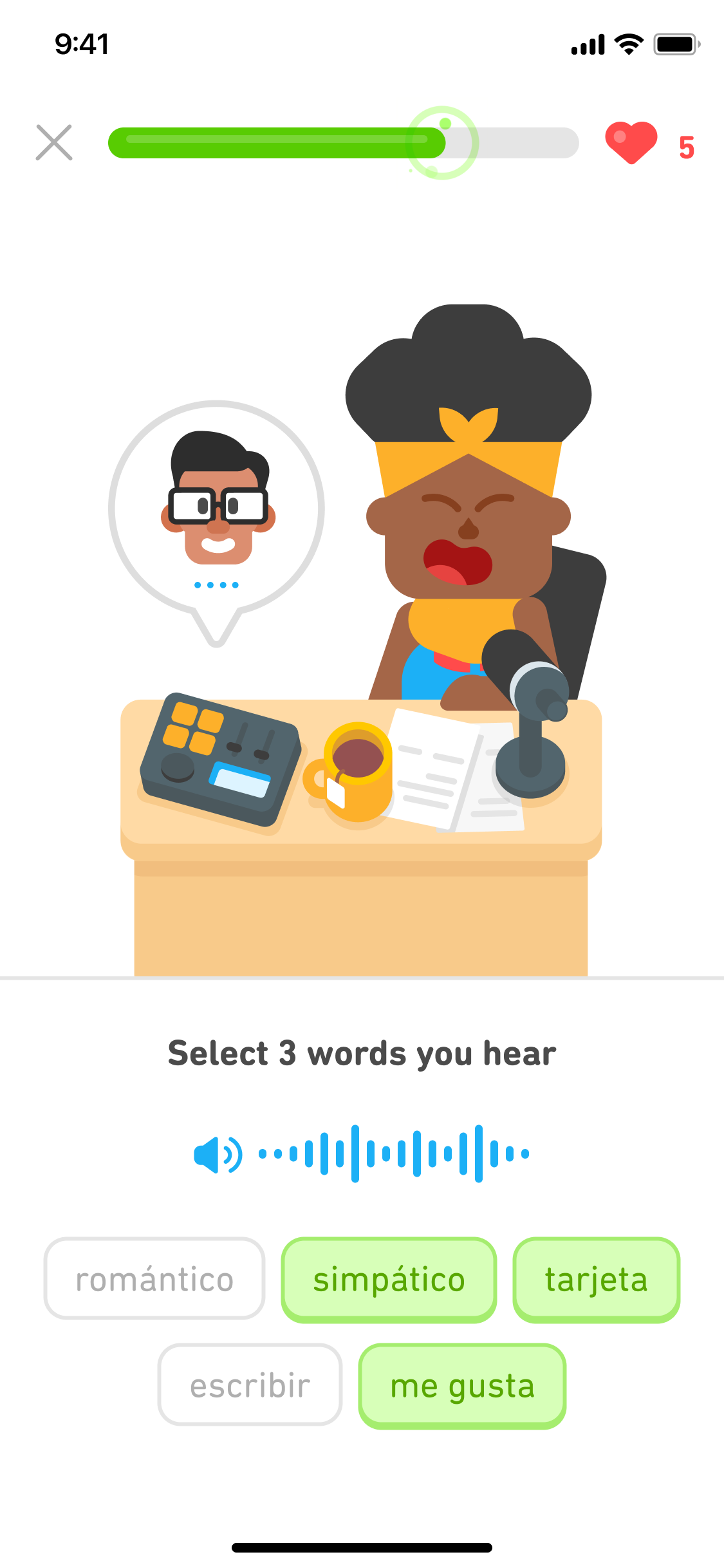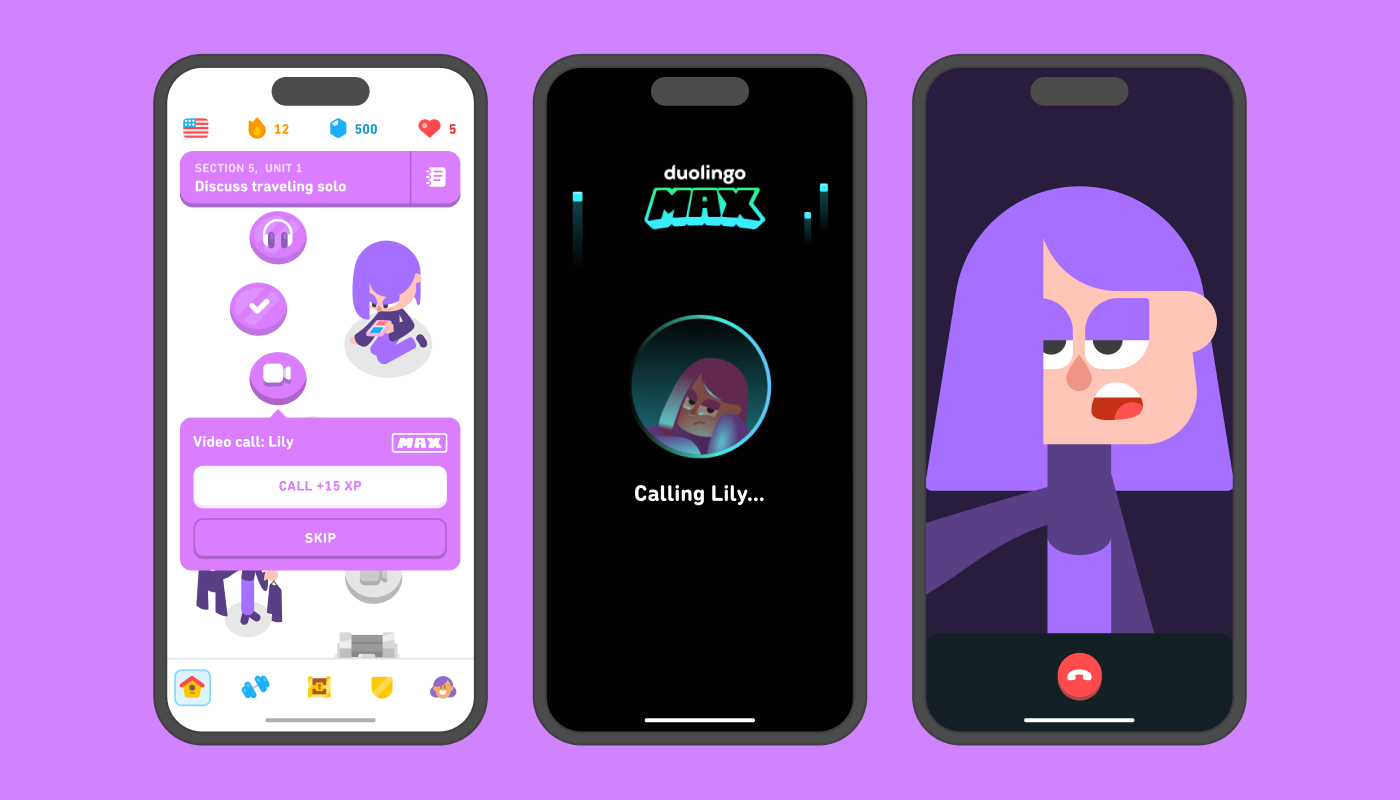If you haven't tried Duolingo in a while, you're in for a surprise: The free language app that teaches more than 40 languages has made some major upgrades!
You'll still find lots of gamification, ways to connect with friends, and a little silliness—after all, we want to keep you motivated, and learning should be fun. 💚
But today our courses are smarter, more engaging, and more complete than ever. Here are the six biggest changes you'll see on Duolingo!
Our courses are more practical than ever.
In the last few years, we have redesigned our biggest courses, including re-building some from scratch, in order to align them with an international language standard called the CEFR (Common European Framework of Reference for Languages).
Today, if you're studying English, Spanish, French, German, Japanese, Italian, or Chinese, you're seeing lessons designed especially to help you reach the language goals most important to learners at each level. These include recognizing familiar words in signs and menus (at the CEFR level of A1), talking about activities in the past (A2 level), writing formal emails to plan meetings (B1 level), and developing complex arguments in writing or speech (B2 level).
Our lessons include a lot more speaking and listening.
Our new courses incorporate new listening and speaking lessons right into your learning path—that means even more opportunities to practice these important skills.
 |
 |
 |
Today, you'll find a suite of new lessons focused exclusively on speaking and listening:
- Speaking lessons: Gradually build up your speaking skills and memory for the most important phrases and questions you'll need in daily life.
- DuoRadio: Hone your listening skills with bite-sized podcasts, hosted by our Duolingo characters, to get you listening without needing text.
- New microphone option: Use the microphone for translation exercises to give yourself extra speaking practice.
- AI-powered chatbot: Subscribers to Duolingo Max also get unlimited access to Video Call, our new feature that connects you with Lily, our Duolingo character-turned-language-partner.

It's never been easier to track your progress.
The new Duolingo Score clearly identifies your progress in the course, so you know how much you've learned, can easily check in on your language goals, and can compare your progress with friends or across courses.
Your Score captures the level of vocabulary and grammar you're studying—the most advanced Duolingo courses reach 120, which is the level you need to get a job in the language!
Interested in officially certifying your English, now that you know your Score? Check out the Duolingo English Test!
Our reading tab teaches you the new writing system.
If you're learning a language with a different writing system, our new reading tab helps you match the symbols to the sounds they make—you'll work through the letters or characters a few at a time to get used to reading (and even writing!) them.
 |
 |
 |
Our best features are in more courses than ever.
Looking for the latest features and most advanced teaching tools? Chances are: Your course has them!
Today, most Duolingo learners are in courses with DuoRadio, speaking lessons, or even Video Call (thanks to AI!), so whether you're studying Spanish or Japanese, German or Korean, you might be pleasantly surprised by all the new features you'll find in your course.
You can learn more than languages with Duolingo.
In addition to over 40 languages, you can also learn math and music on Duolingo! Whether you're working to keep your brain sharp or want to learn to play your favorite pop songs, you've got bite-sized lessons developed by teaching experts in the palm of your hand.
See for yourself!
Downloading Duolingo is still free, so try out our new courses for yourself—you're just a few clicks away from learning to order in Japanese at konbini, navigate Paris in French, and understand German culture!
